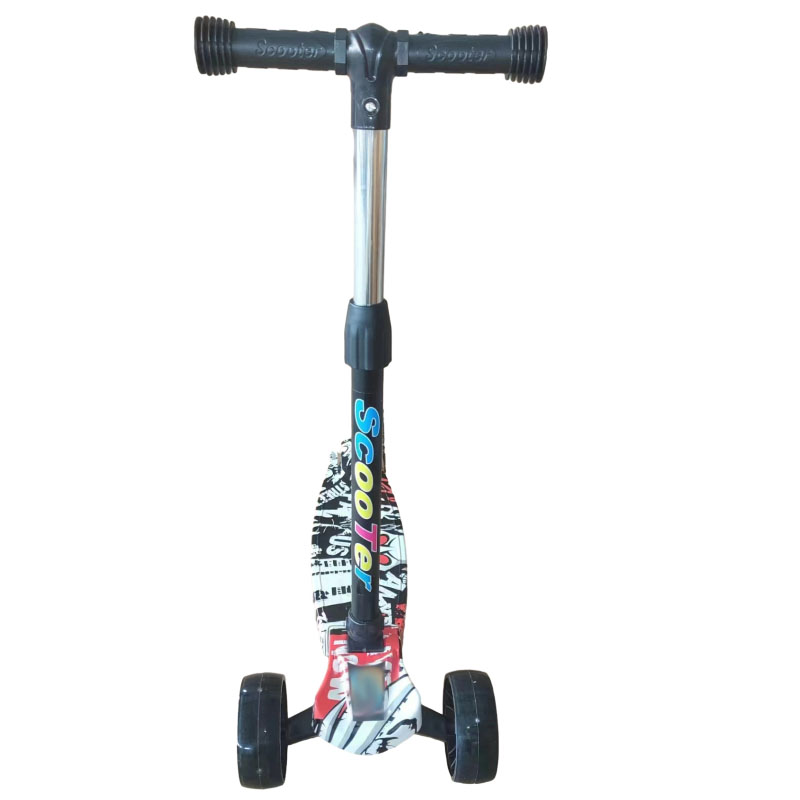How to Ride a Kid's Scooter A Fun Guide for Young Riders
Riding a kid's scooter is not only a delightful activity but also a fantastic way to develop balance, coordination, and confidence. Whether your child is a beginner or has some experience, mastering the art of riding a scooter can be an exciting journey! This guide will take you through the essentials of scooting, from choosing the right scooter to learning the basics of riding safely.
Choosing the Right Scooter
Before you step onto the pavement, it's essential to choose the right scooter. Kid's scooters come in various styles and sizes, and selecting the one that fits your child is crucial for their safety and enjoyment. Here are some key points to consider
1. Height and Weight Limit Ensure that the scooter is suitable for your child's height and weight. Most scooters have recommended height and weight limits that should be followed.
2. Scooter Type The most common types are two-wheeled and three-wheeled scooters. Three-wheeled scooters provide more stability and are excellent for younger or less experienced riders, while two-wheeled scooters allow for more advanced maneuvers.
3. Material and Durability Look for a scooter made of sturdy materials like aluminum or high-quality plastic to ensure it can withstand rough use.
4. Safety Features Opt for scooters with non-slip decks, reliable brakes, and wide handlebars, which contribute to a safer riding experience.
Essential Safety Gear
Safety should be a top priority when riding a scooter
. Equip your child with the following safety gear- Helmet A well-fitting helmet is a must to protect the head in case of falls. - Knee and Elbow Pads These pads provide extra protection for joints during stunts or sudden stops. - Closed-Toe Shoes Sneakers are ideal as they offer good grip and protection for the feet.
Learning to Ride
how to ride a kid scooter

Now that you have the right scooter and gear, it's time to learn how to ride. Follow these steps for a smooth start
1. Find a Safe Space Begin in a flat, open area with plenty of space, away from traffic and obstacles. Parks or empty sidewalks are great places to practice.
2. Positioning Have your child stand with one foot on the scooter's deck and the other foot on the ground. The foot on the deck should be positioned over the rear wheel, which will make it easier to push off.
3. Pushing Off Teach them to push off with the foot on the ground by using an outward motion. They should aim to gain some momentum.
4. Balancing As they start to gain speed, they should bring the foot on the ground up to the deck. Balancing is crucial, and they may wobble initially — encourage them to keep their eyes forward and their knees slightly bent for better stability.
5. Steering To steer the scooter, your child should lean slightly in the direction they want to go. For instance, if turning left, they should lean to the left while keeping the handlebars steady.
6. Braking Most scooters have either foot brakes or hand brakes. If using a foot brake, they should press down on the rear fender with the back foot to slow down. Make sure they practice using the brakes so that they feel confident in stopping.
Practice and Progress
After your child has mastered the basics, the next step is practice! Encourage them to ride regularly, and gradually introduce different terrains and challenges, like gentle slopes or turns. As they become more comfortable, they can experiment with tricks, but always stress the importance of safety.
Final Thoughts
Riding a kid's scooter can be a fun and rewarding activity that promotes healthy physical activity. With the right scooter, safety gear, and guidance, your child can enjoy hours of outdoor fun while learning valuable skills like balance, coordination, and confidence. So grab that scooter, find a spacious area, and let the fun begin! Happy scooting!
-

 Scoot&RideKids Child Kick Push Scooter 3 Wheels with LED Flashing Tilt Lean Boys Girls Scooter
Scoot&RideKids Child Kick Push Scooter 3 Wheels with LED Flashing Tilt Lean Boys Girls Scooter




- 4
$33.17 -

 Scoot&RideKids Scooter Child Kick Flashing LED Light Up 3 Wheel Push Adjustable Folding 3
Scoot&RideKids Scooter Child Kick Flashing LED Light Up 3 Wheel Push Adjustable Folding 3- 0
$25.52 -

 Scoot&RideKids Scooter Child Kick Flashing LED Light Up 3 Wheel Push Adjustable Folding 2
Scoot&RideKids Scooter Child Kick Flashing LED Light Up 3 Wheel Push Adjustable Folding 2- 0
$33.17 -

 Scoot&RideKids Scooter Teens Foldable Kick Push Scooter Adjustable Height Safe 2 Wheels
Scoot&RideKids Scooter Teens Foldable Kick Push Scooter Adjustable Height Safe 2 Wheels




- 4
$49.99
Meet our partners and discover what powers their creativity!
When you register for a Lohas scooter, you will receive a 10% discount on your first order and can be notified of sales, new product launches and other offers in advance.









